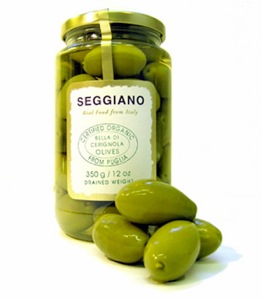-
- Records reveal Nixon aimed to show ‘nice’ side
- Inmate performs self-castration and sues for estrogen therapy
- ‘Hustler’ magazine’s publisher investigating sexual activities of lawmakers
- Surgeon general nominee says he would resign rather than let politics dictate science
- Chicago’s 2006 Gay Games declared a financial success
- Co-chair of John McCain’s presidential campaign arrested in gay sex sting
- National News Briefs
dining out
Olive oil: a liquid gold for millennia
Published Thursday, 19-Jul-2007 in issue 1021
The role of olive oil has a short history for those of us who grew up eating salads drowned in shabby “vinaigrettes” – the ones that our mothers would shake up in a Seven Seas bottle to blend Wesson vegetable oil and cheap white vinegar.
Unless you grew up in a traditional Greek or Italian family, olive oil wasn’t a staple of the American diet until the late ’70s and early ’80s, when Italy stepped up its export productions and California olive pressers began multiplying to win a share of the U.S. market. Almost overnight, olive oil came into vogue, and in California alone there are now more than 200 producers of world-class olive oil.
But this highly digestible byproduct of the green olive has an intriguing and illustrious past dating back to 5000 B.C., when Greek philosophers and physicians began touting its many curative properties. The olive tree itself became a symbol of abundance, glory and peace, while the oil from its fruit was used to anoint noble heads of state and the bones of the dead.
In ancient Egypt and Rome, olive oil was infused with flowers and grasses to produce medicines and cosmetics. And by 1500 B.C., it became such a hot commodity that advance ships were built for the sole purpose of transporting it from Greece to trading posts around the Mediterranean.
The cultivation of olive trees during that time was paramount to the region’s wealth and power. In the land of the Hebrews, King David supposedly commissioned guards to watch over the numerous olive groves and warehouses that stored their precious oil. And in Hellenic societies throughout Greece, vandals of olive trees equated to murderers and were condemned often to death or exile.
Olive oil became a key component of the early Olympians’ culture as well. Not only did athletes rub it on their bodies for aesthetic sheen, they were awarded the stuff in five-ton quantities for winning various games. (Whether they massaged it on each other afterwards in sensual celebration is something best left to the imagination.)
Here are some noteworthy facts pertaining to that “liquid gold” sitting in your cupboard.
Extra-virgin olive oil has the lowest smoke point of all oils. Heat it above only 375 degrees and you’ll end up with an odorous cloud in your kitchen.
Almost overnight, olive oil came into vogue, and in California alone there are now more than 200 producers of world-class olive oil. The deeper green the color, the more intense the flavor.
One ton of olives will yield only 15 to 40 gallons of oil, depending on the variety.
You can extend the freshness of olive oil from six months (when stored at room temperature) to one year if you keep it in the refrigerator. Un-opened containers of extra virgin olive oil should be used within 12 months of the harvest date on the label.
Olive oil can be used for making desserts such as cakes, tarts or cookies that contain fruits and nuts.
Olive oil reportedly helps the body assimilate vitamins A, D and K – and contains essential acids that we can’t produce naturally.
Italy and Spain are currently the most prolific producers of olive oil. Greece and California rank second and third.
According to the International Olive Oil Council, more than 285 metric tons of the product was imported into the United States last year.
The California Olive Oil Council, founded in 1992, will host the fourth annual Olivefest on Aug. 25 in Paso Robles, a five-hour drive north from San Diego.
|
|
Copyright © 2003-2025 Uptown Publications


